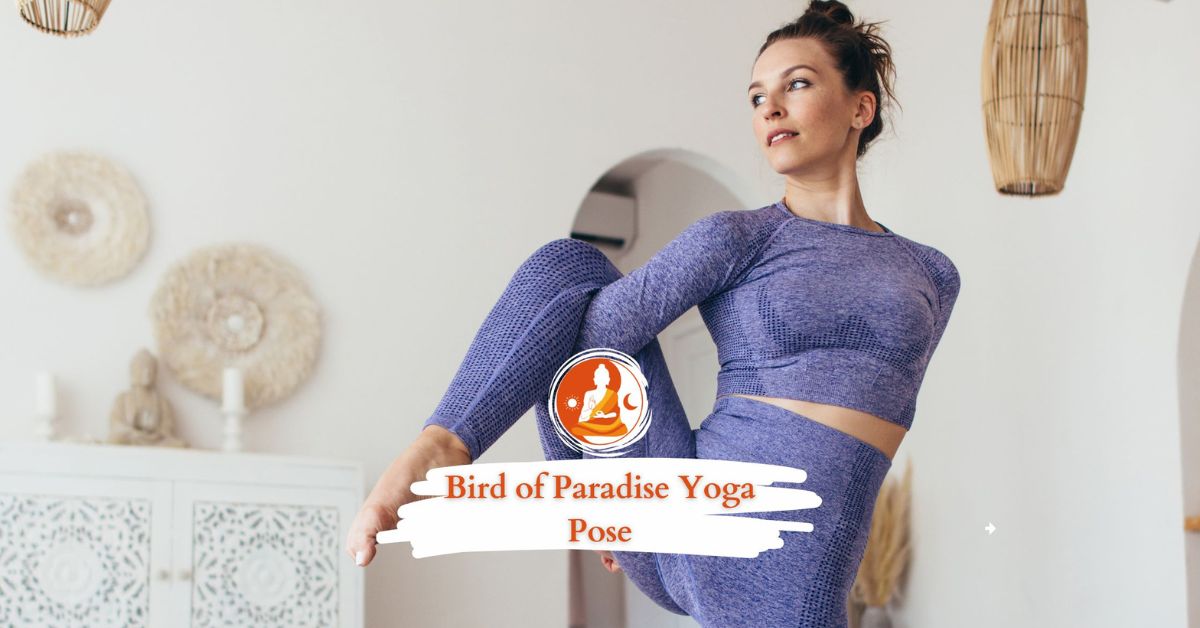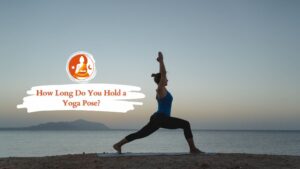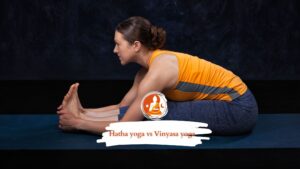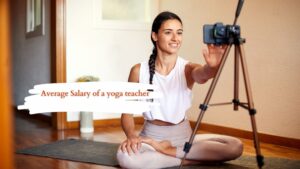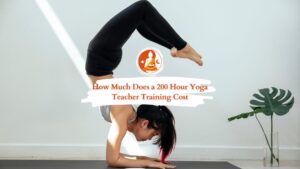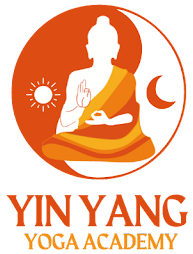Attractive and challenging, the Bird of Paradise yoga pose integrates balance, flexibility, and strength. This blog is a thorough resource for yoga practitioners of all skill levels by explaining the Bird of Paradise posture, how to do it correctly, and several variations on the pose. Whether you are an experienced yogi seeking to deepen your practice or a complete novice ready to tackle this difficult posture, we will show you how to do the Bird of Paradise. Gain a better grasp of your physical capabilities, strengthen your mind body connection, and deepen your yoga practice by learning the nuances of this position and adding it to your regular practice.
Table of Contents
ToggleThe Origins and Symbolism of Bird of Paradise Pose
The colorful and vivid Bird of Paradise flower inspired the yoga position Svarga Dvijasana. This tropical plant remarkable look and vibrant colors represent freedom, beauty, and paradise in many cultures. The posture in yoga encourages balance, elegance, and inner power as practitioners seek to achieve this difficult asana.
The pose name and shape reference New Guinea and eastern Australia spectacular Bird of Paradise. The yoga pose birds of paradise graceful and dynamic form mimics these birds’ complex courting rituals and bright plumage.
The Bird of Paradise position symbolizes human development and change in various yoga systems. This position encourages practitioners to reach their physical and spiritual potential, like the Bird of Paradise flower. The pose difficulty symbolizes conquering challenges and achieving new heights in practice and life.
The Bird of Paradise yoga position symbolizes more than a flower or bird. It symbolizes discovering beauty and elegance in difficult circumstances. Practitioners learn the value of keeping calm in life as they struggle to balance in this challenging position.
Benefits of Practicing Bird of Paradise Pose
Yoga Bird of Paradise pose has many physical and emotional advantages. This stance boosts strength, flexibility, and balance, working multiple muscular groups in one position.
Bird of Paradise yoga position improves hip flexibility. The standing leg hip must expand deeply to relieve tension and enhance the range of motion in this restricted location. This helps mitigate the detrimental consequences of a sedentary lifestyle, especially for long term sitters.
The position greatly improves core strength. The Bird of Paradise involves continual abdominal, oblique, and lower back activation to maintain balance, strengthening the midsection and improving posture.
Another focus of this position is shoulder mobility. Wrapping the arms over the leg and back opens the chest and shoulders, enhancing flexibility. This is particularly helpful for persons with upper body stiffness from stress or bad posture.
Standing Bird of Paradise yoga strengthens legs and ankles. The supporting leg must be firm and steady throughout the position, building lower body muscle endurance and stability.
The difficulty of the Bird of Paradise pose improves mental focus and attention. The pose balance requires complete focus, clearing the mind, and promoting awareness. This concentrated attention may be meditative, bringing peace and presence despite the physical hardship.
Moreover, successfully achieving and holding the Bird of Paradise can substantially boost confidence and self esteem. Mastering this difficult position gives practitioners a feeling of success and pride, which may boost self confidence and a can do attitude in other aspects of life.
Another benefit of the position is stress alleviation. Physical activity and mental concentration may reduce stress and anxiety, fostering serenity and well being. Breathing deeply and being present in the difficult pose helps practitioners manage stress in everyday life.
Preparing for Bird of Paradise: Essential Warm Up Sequences
Warm up before trying the Bird of Paradise position to avoid injury and prepare your muscles for the demanding asana. A good yoga sequence for Bird of Paradise opens hips, shoulders, and hamstrings, building core strength and balance.
Start your warm up with Sun Salutations to circulate blood and warm up main muscle groups. This traditional pattern warms up and increases flexibility, preparing the body for more intense stretching and strengthening.
Next, try hip flexibility and leg strength standing positions. Warrior II expands the hips and strengthens the legs like the Bird of Paradise standing position. Hold this stance for several breaths on each side, sinking deeper into the stretch with each exhale.
Move from Warrior II to Extended Side Angle Pose. This asana introduces the Bird of Paradise yoga position, which requires twisting and side bending. Focus on expanding your side body and engaging your core while holding this position.
Practice Bound Side Angle Pose for Bird of Paradise binding. This variant adds the arm wrap for the final stance. Strap your hands if you can’t tie them. This tweak lets you feel the bind while improving flexibility. Your warm up should include balancing positions. Half Moon Pose is great for balance, hip opening, and standing leg strength. Practice this stance on both sides with a block supporting you.
Your warm up should include a few rounds of Standing Forward Fold to target the hamstrings and lower back. This pose helps to lengthen the back of the legs and release tension in the spine, both of which are crucial for achieving the full expression of the Bird of Paradise pose.
Finish with twisting exercises for spinal mobility and shoulder opening. Sitting twists like Ardha Matsyendrasana (Half Lord of the Fishes Pose) might prepare your body for Bird of Paradise.
Remember, moving mindfully and listening to your body is the key to an effective warm up. Take your time with each pose, focusing on proper alignment and breathing deeply into any areas of tension. This thoughtful approach will prepare your body for the Bird of Paradise pose and help prevent injury and enhance your overall yoga practice.
Step by Step Guide to Bird of Paradise Yoga Pose
Now that you are warmed up let us simplify the Bird of Paradise position. Respect your body boundaries and progress gently and thoughtfully through each level, making adjustments as required.
- Start in Tadasana at the top of your mat. Ground your feet and engage your core to stabilize the position.
- Return to a low lunge with your left foot. To protect your right ankle, stack your right knee straight over it.
- Turn your body right, with your right hand in your right foot on the floor. This twist opens your chest and shoulders, beginning the binding motion.
- Stretch your right elbow behind your right leg and your right hand around your back. Be slow and breathe deeply since this practice involves shoulder and chest flexibility.
- Try clasping your hands with your left arm behind your back. If this is hard, use a yoga strap to connect your hands. Bird of Paradise yoga requires a bind, but don’t push it.
- Slowly straighten your right leg with your hands clasped or gripping the strap. This shifts your weight onto your right foot and starts the balancing position.
- Lift your left foot and completely transfer your weight onto your right. Do this slowly and controlled to preserve balance and binding.
- Toes toward the ceiling, and slowly straighten your left leg—full Bird of Paradise posture. Accept your body’s current state if you can’t completely straighten your leg.
- Hold the stance for 3-5 breaths or longer if comfortable. Focus on a strong, solid standing leg and an active lifted leg.
- Regain Mountain Pose by carefully lowering your left leg and unwinding your arms. Before switching sides, experience the pose consequences.
- Replicate the process on the left, stepping back in the lunge and locking your left arm behind your left leg.
Remember that perfecting the Bird of Paradise yoga position takes time. Practitioners often spend months or years on this difficult asana. Celebrate modest wins and progress at each level.
Common Challenges and How to Overcome Them
Many struggle with the Bird of Paradise stance. Understanding these typical concerns and having solutions will help you practice safely and successfully.
Tight hips are a common issue. Many individuals struggle with the Bird of Paradise deep hip opening, particularly those who sit a lot or have tight hip flexors. To fix this, include hip opening postures in your practice. Pigeon Pose, Low Lunge variants, and Lizard Pose are great hip flexibility builders.
Also prevalent are binding action difficulties. Many yoga practitioners struggle to clasp their hands behind their backs, a vital part of Bird of Paradise. If something is hard, don’t push it. Instead, connect your hands with a yoga strap. As your shoulder and chest flexibility increases, you may go closer to the complete bind.
Many need help to balance this stance. Even skilled yogis may be destabilized by standing on one leg, binding, and stretching the other. Use a wall to practice the position for balance. Your lifted foot may be on a yoga block until your standing leg is stronger and more stable.
Poor shoulder mobility might make the Bird of Paradise position challenging. The binding action involves shoulder and chest mobility. Add shoulder opening exercises and positions to your program. Poses like Thread the Needle and Cow Face Arms improve shoulder flexibility.
This position may cause knee discomfort in certain practitioners. This commonly results from standing leg misalignment. Maintain knee tracking over the second toe and prevent inward collapse. Chair Pose and Warrior Pose strengthen knee muscles, controlling knee pain.
Be patient—overcoming these obstacles takes time and experience. Be patient with yourself and always listen to your body, backing off if you experience pain or excessive discomfort. With regular practice and proper guidance, you can gradually work through these obstacles and move closer to mastering the Bird of Paradise yoga pose.
Variations and Modifications for All Levels
The Bird of Paradise yoga pose is suitable for all levels. By offering adjustments and variants, yoga instructors can make this tough position accessible to more students while retaining its benefits. The Beginner Bird of Paradise Yoga variant is ideal for beginners. Maintain a low lunge with the rear foot on the ground while binding. The upper body mechanics of the position may be focused on without balancing on one leg.
Build strength and flexibility to reach the Half Bird of Paradise. After the bind, pull the rear leg parallel to the ground instead of completely extending it. This intermediate stage builds balance and core strength for the complete position.
The Wall Bird of Paradise position might aid balance challenged people. Proceed through the position with your back to a wall. The wall supports and aligns you as you gain posture confidence. Sitting Bird of Paradise may let practitioners work on the binding action without the balancing problem. Bind and extend while sitting on the floor. This lets you open the hips and shoulders without worrying about standing.
Advanced practitioners might challenge themselves with the Flying Bird of Paradise. Lift the standing leg onto the foot ball or relevé in this variant. This needs tremendous attention, strength, and balance, making the position harder. Variations are not linear. Perhaps you can execute parts of the whole position while still benefiting from the adjustments. The trick is to listen to your body and determine the challenge you need each day.
A prop may also make the bird position yoga easier. A strap for the bind, a block beneath the standing foot for height, or a wall for balance are great options to adapt the pose to your ability. Explore these variations and adaptations to benefit from the Bird of Paradise at any yoga level. Each variety provides distinct challenges and rewards, helping you develop and progress in your practice.
Conclusion
There are many psychological, emotional, and spiritual advantages to practicing the difficult but ultimately fulfilling Bird of Paradise yoga pose. You may safely add this lovely yoga stance into your practice after you know its history, correct way to do it, and variants. Remember that you must approach the Bird of Paradise with constancy, patience, and awareness of your physical limitations.
As you work towards perfecting this posture, your strength, flexibility, and balance will increase. You will also develop a deeper understanding of yourself and find inner serenity. The Bird of Paradise, a potent instrument for individual development, imparts lessons in self acceptance, patience, and persistence.
Every yoga practitioner may benefit from the Bird of Paradise, whether they are just starting out and making adjustments or are well experienced and trying to reach the full potential of the posture. It both encourages and reminds us to remain rooted and balanced while we strive to overcome our apparent constraints.
Embrace the difficulty, enjoy the journey, and watch as your yoga practice reaches new heights in the Bird of Paradise posture. Keep in mind that the beauty of this position is not in its finished form but in the path of personal development it encourages. The Bird of Paradise is more than a position; it should represent the way you approach life: gracefully, powerfully, and with an open heart. May this transformation occur as you practice and grow.
People Also May Ask!
Everyone needs a little bit more time to get the hang of this stance. It might take some people a few months of dedicated practice, while others could need a whole year. Keep in mind that getting there is essential, but the trip itself is paramount.
Although it is a challenging position, novices may gradually increase their flexibility and strength by practicing variations and preparatory poses. Follow your body cues and go at your own speed.
Although Bird of Paradise isn’t designed to help you lose weight per se, it is a great addition to any balanced yoga practice since it works so many different muscle groups.
Stay away from this position if you have recently hurt your hips, knees, or shoulders. Those expecting a child or who have hypertension should also avoid it. Before doing any kind of advanced yoga posture, it is imperative that you speak with your doctor.
To avoid overexerting yourself, try to practice the posture or one of its components no more than two or three times a week. Keep in mind that the quality of your practice matters more than its quantity.

